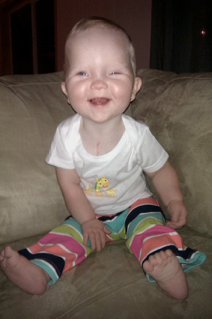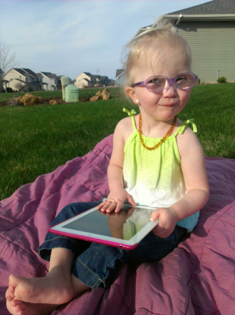
Aug 01, 2017
The patient was diagnosed with a heart defect (tetralogy of Fallot with pulmonary atresia) before she was born, which was repaired after birth. She was also found to have problems with the connection between her brain and spinal cord (Chiari I malformation) and the spinal cord itself (tethered cord).
She had episodes of hypoglycemia (low blood sugar) as a newborn with no cause found. At 3 years old, she had a severe hypoglycemic episode while sick with a virus. Since that time, it has been medically determined that if she does not eat every two to four hours, her blood sugar can drop into the 30-40s. It was thought that she may have a mitochondrial condition or glycogen storage disease, but testing for these conditions has not revealed a diagnosis. Glucagon is not effective in treating her hypoglycemia.
The patient has never been able to feed orally, therefore, she uses a g-tube for feeding and has a Nissen fundoplication to prevent reflux. She has a developmental delay and is nonverbal, but is making progress, especially with her motor skills. She also has vision issues (hyperopia, amblyopia) and wears glasses.


In 2022, clinicians and researchers identified the following de novo genetic change to be causing the participant’s symptoms. Additional possibilities are still being explored for this participant. Please reach out if you or someone you know has the same condition with some of the same symptoms.
If this participant sounds like you or someone you know, please contact us!